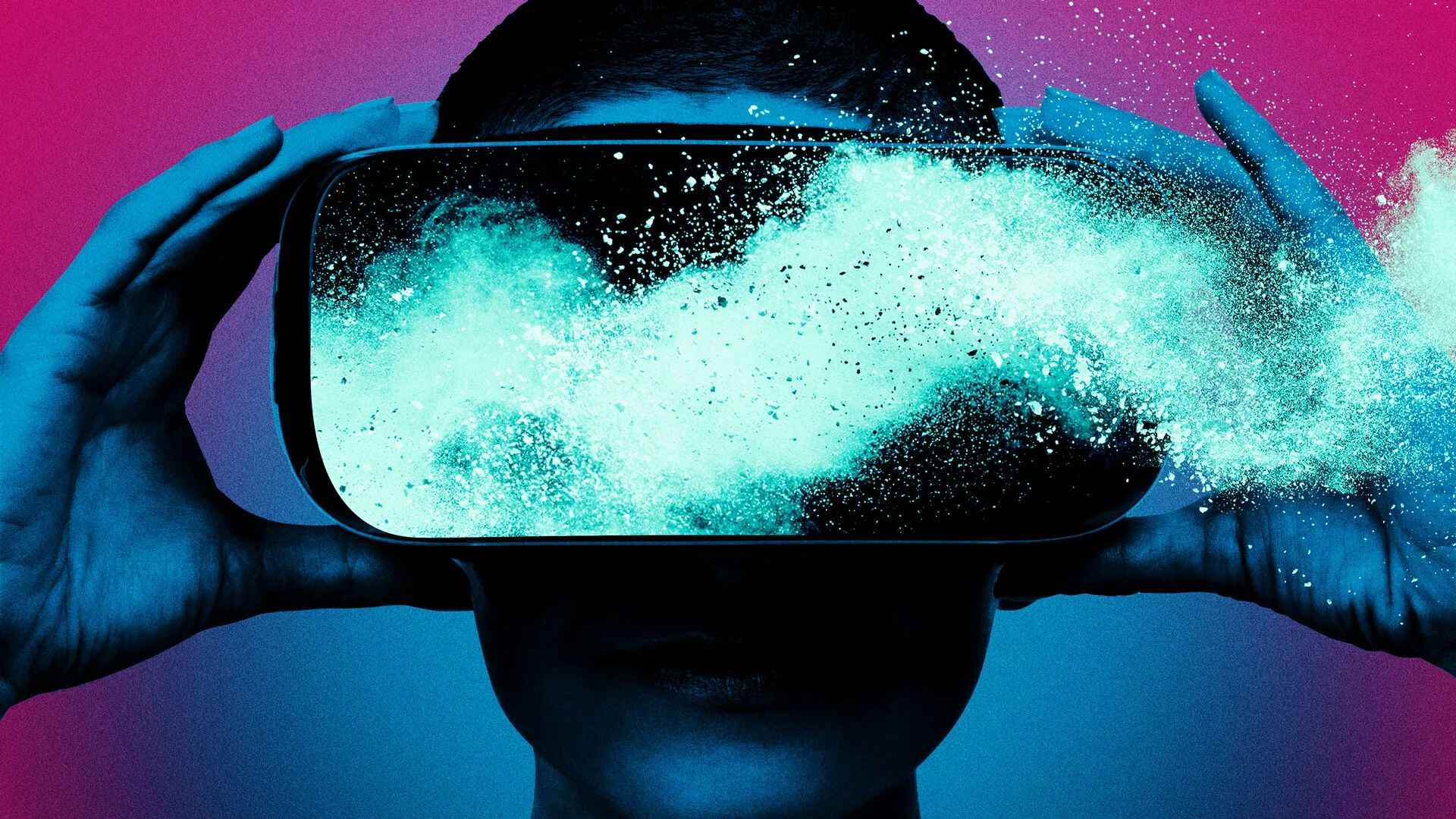Introduction
Welcome to the future, where the concept of the Metaverse has captured the imagination of tech enthusiasts and gamers alike. The Metaverse is a virtual reality space where users can interact with a computer-generated environment and other users in real-time. It is a digital universe that blurs the line between the real world and the virtual world, offering endless possibilities for communication, entertainment, and productivity.
One of the main players in the development of the Metaverse is Facebook, the social media giant that has rebranded itself as Meta. With its mission to “bring the Metaverse to life,” Meta is investing heavily in building a shared, immersive virtual reality experience that promises to revolutionize how we live, work, and play.
The idea of the Metaverse is not new. It has been a popular concept in science fiction for decades, with books like “Snow Crash” and “Ready Player One” portraying immersive virtual environments where people can escape the limitations of the physical world. However, recent advancements in technology, such as virtual reality headsets and high-speed internet connectivity, have brought us closer to turning this concept into reality.
The vision of the Metaverse goes beyond just gaming. It envisions a future where people can work remotely, attend virtual meetings, explore virtual worlds, and interact with others in ways that were previously unimaginable. It has the potential to transform industries like education, healthcare, entertainment, and more.
Facebook’s push into the Metaverse began with the acquisition of Oculus VR in 2014, a company that specializes in virtual reality hardware and software. This acquisition laid the foundation for Meta’s future developments in the virtual reality space. Since then, Meta has been dedicated to pushing the boundaries of virtual reality technology and creating a more immersive and lifelike experience for users.
But how much has Meta actually invested in its Metaverse ambitions? In the following sections, we delve into the company’s spending on Metaverse development, including investments in virtual reality hardware, research and development expenditure, partnerships, and acquisitions. Let’s explore the financial commitment that Meta has made to bring the Metaverse to life.
What is the Metaverse?
The Metaverse is a term that is gaining significant attention in the tech world, but what exactly does it mean? In simple terms, the Metaverse refers to a virtual reality space where users can engage with a computer-generated environment and interact with other users in real-time. It is a digital universe that combines elements of augmented reality, virtual reality, and social networking to create immersive and interactive experiences.
Imagine stepping into a virtual world where you can explore new environments, meet people from around the globe, attend virtual events, play games, and engage in a multitude of activities. The Metaverse goes beyond traditional online platforms by offering a shared and persistent digital space that users can inhabit and interact with in ways that mimic the real world.
Unlike isolated virtual reality experiences, the Metaverse aims to create a connected and cohesive digital realm. It breaks down the barriers between physical locations and offers users a seamless transition between different virtual environments. In the Metaverse, you can walk through virtual cities, teleport to different worlds, and engage in activities that range from virtual shopping to attending virtual concerts.
One of the key aspects of the Metaverse is its social nature. Users can interact with each other using avatars, which are digital representations of themselves. These avatars allow for real-time communication and collaboration, enabling users to engage with others as if they were physically present. This social aspect creates a sense of community and connection, making the Metaverse a hub for social interactions and shared experiences.
While gaming is often associated with the Metaverse, its potential goes far beyond entertainment. The concept has the potential to revolutionize various industries, including education, healthcare, business, and even government services. For example, in the Metaverse, students can attend virtual classes, doctors can conduct remote consultations, businesses can hold virtual meetings, and government agencies can provide virtual services to citizens.
The development of the Metaverse relies on cutting-edge technologies such as virtual reality headsets, motion tracking, haptic feedback devices, and advanced networking infrastructure. These advancements enable users to immerse themselves in the virtual world and engage with it in a more natural and intuitive manner.
Overall, the Metaverse represents a new frontier in the digital landscape, blurring the lines between the physical and virtual realms. It promises exciting opportunities for innovation, collaboration, and creativity. As technology continues to advance, the Metaverse is poised to transform the way we live, work, and interact with the digital world.
Facebook’s Plan for the Metaverse
With their rebranding as Meta, Facebook has set its sights on becoming a frontrunner in the development of the Metaverse. Mark Zuckerberg, the CEO of Meta, has been vocal about his vision for the company and its ambitious plan to bring the Metaverse to life. So, what exactly is Facebook’s plan for the Metaverse?
Meta’s goal is to create a connected digital universe that seamlessly integrates with our physical world, revolutionizing the way we communicate, work, and play. They envision a future where people can step into the Metaverse and interact with others as if they were physically present, breaking down the barriers of distance and time.
One of the main pillars of Facebook’s plan for the Metaverse is the development of a more immersive and lifelike virtual reality experience. Meta aims to improve the hardware and software capabilities of virtual reality headsets, making them more comfortable, affordable, and accessible to a wider audience. They want to create a sense of presence in the virtual world, where users can truly feel as if they are there, interacting with their surroundings and other users.
Furthermore, Facebook plans to enhance social interactions in the Metaverse. They want to build a platform that allows users to connect with friends, family, colleagues, and people with shared interests in a virtual environment. This social aspect is crucial for fostering engagement and creating a sense of community within the Metaverse. Meta envisions virtual hangouts, collaborative workspaces, multiplayer gaming experiences, and virtual events that bring people together from all over the world.
Another key focus of Facebook’s plan is to ensure the safety and privacy of users in the Metaverse. Meta acknowledges the challenges of creating a shared digital space and is committed to addressing issues such as harassment, toxic behavior, and misinformation. They are investing in systems and policies that promote a positive and inclusive environment within the Metaverse, prioritizing user safety and well-being.
Moreover, Facebook plans to make the development of the Metaverse a collaborative effort. They recognize that building the Metaverse requires the collaboration of various stakeholders, including developers, creators, and researchers. Meta aims to foster partnerships and provide tools and resources that enable others to contribute to the development of the Metaverse ecosystem. This open approach is essential to drive innovation and create a diverse range of virtual experiences.
Overall, Facebook’s plan for the Metaverse is expansive and ambitious. They aim to redefine how we connect, work, and play in the digital age. Through the development of immersive virtual reality experiences, enhanced social interactions, a focus on safety and inclusivity, and a collaborative approach, Meta strives to bring the Metaverse to life and shape the future of human interaction.
The Acquisition of Oculus VR
In 2014, Facebook made a strategic move that would lay the foundation for its foray into the Metaverse – the acquisition of Oculus VR. Oculus VR is a company that specializes in virtual reality hardware and software, with their flagship product being the Oculus Rift virtual reality headset.
The acquisition of Oculus VR was a landmark moment for both Facebook and the virtual reality industry. It signaled Facebook’s commitment to becoming a major player in the virtual reality space and their recognition of virtual reality as a transformative technology with the potential to shape the future of digital experiences.
Facebook saw the acquisition of Oculus VR as an opportunity to accelerate the development of virtual reality technology and create a more immersive and engaging user experience. The Oculus Rift, with its high-resolution display, precise tracking system, and comfortable design, was a breakthrough product that impressed both consumers and industry experts.
With the acquisition, Facebook gained access to Oculus VR’s talented team of engineers, designers, and developers who had been pushing the boundaries of virtual reality technology. This acquisition gave Facebook the necessary expertise and resources to drive innovation in the virtual reality space, bringing them closer to their goal of building the Metaverse.
A key aspect of the acquisition was the integration of Oculus VR’s technology and expertise into Facebook’s broader ecosystem. Facebook recognized the potential applications of virtual reality beyond gaming and saw opportunities in areas such as immersive storytelling, virtual meetings, and virtual tourism. The integration of Oculus VR’s technology into the Facebook platform opened up new avenues for users to explore and interact with virtual reality content.
Since the acquisition, Facebook has continued to invest in and refine Oculus VR’s products. They have released subsequent versions of the Oculus Rift headset, including the Oculus Quest and Oculus Quest 2, which offer standalone virtual reality experiences without the need for a PC or external sensors.
The acquisition of Oculus VR was a pivotal move that solidified Facebook’s position as a leader in the virtual reality industry and set the stage for their ambitious plans in the Metaverse. It laid the foundation for Meta’s ongoing efforts to create a more immersive and connected digital world, where users can step into the Metaverse and experience virtual reality in a way that was previously only seen in science fiction.
Facebook’s Spending on Metaverse Development
As Meta strives to bring the Metaverse to life, they are investing significant resources in the development and advancement of this transformative technology. While the exact details of Facebook’s spending on Metaverse development are not publicly disclosed, it is evident that Meta is committed to allocating substantial funds to turn their vision into reality.
One area where Meta has made significant investments is virtual reality hardware. The acquisition of Oculus VR was just the beginning, as Facebook continued to release and improve their virtual reality headsets. The Oculus Quest and Oculus Quest 2, for example, brought standalone virtual reality experiences to a broader audience, eliminating the need for a PC or external sensors. The development and manufacturing of high-quality virtual reality hardware require substantial investment in research, design, production, and distribution.
Research and development (R&D) expenditure is another significant part of Meta’s spending on Metaverse development. As they push the boundaries of virtual reality technology, Meta invests in R&D to improve the overall user experience, enhance graphical fidelity, and create more immersive virtual environments. This investment includes the development of advanced tracking systems, ergonomic hardware design, and software optimizations to deliver seamless and realistic virtual experiences.
In addition to in-house R&D, Meta has actively sought partnerships and made strategic acquisitions to strengthen their position in the Metaverse market. These partnerships and acquisitions allow Meta to access specialized expertise, proprietary technologies, and a wider range of virtual experiences. By collaborating with other companies and developers, Meta aims to foster innovation in the Metaverse ecosystem and accelerate the development of virtual reality applications.
Creating a robust and interconnected Metaverse requires an investment in infrastructure and connectivity. Meta recognizes the importance of reliable high-speed internet and low-latency networks to support seamless virtual experiences. They are actively involved in initiatives to improve connectivity, such as the development of virtual reality-focused hardware and software protocols, partnerships with telecom companies, and investments in network infrastructure.
As Meta continues to drive the development of the Metaverse, it’s important to note that their spending on Metaverse development extends beyond monetary investments. They also invest significant time, energy, and talent in research, planning, and strategic decision-making. Meta’s commitment to bringing the Metaverse to life goes beyond financial resources, as they work tirelessly to overcome technical challenges and build a sustainable and scalable ecosystem.
Overall, Meta’s spending on Metaverse development encompasses various aspects, including virtual reality hardware, research and development, partnerships and acquisitions, and infrastructure. By investing heavily in these areas, Meta aims to build the foundation for a vibrant and immersive Metaverse that will shape the future of digital experiences.
Investments in Virtual Reality Hardware
When it comes to bringing the Metaverse to life, Meta recognizes the critical role that virtual reality hardware plays in delivering immersive and engaging experiences. As a result, they have made substantial investments in the development and improvement of virtual reality hardware.
The acquisition of Oculus VR was a significant step for Meta, as it provided them with a strong foundation in virtual reality technology. The Oculus Rift, the flagship product of Oculus VR, showcased the potential of virtual reality with its high-resolution display, precise tracking, and ergonomic design. Since then, Meta has continued to invest in the hardware capabilities of virtual reality headsets.
One area of investment is in improving the comfort and ergonomics of virtual reality headsets. Meta understands that prolonged usage of virtual reality headsets can cause discomfort and fatigue, limiting the overall immersive experience. To address this, they have invested in research and development to create lighter, more comfortable headsets with adjustable straps, padding, and ventilation. By making the hardware more user-friendly, Meta aims to encourage longer and more enjoyable virtual reality sessions.
Another area of focus is enhancing the visual quality of virtual reality experiences. Meta has devoted resources to improving the resolution, field of view, and color reproduction of their headsets. Crisp and vibrant visuals contribute to a more immersive and realistic virtual world. Meta’s investment in display technologies and optical systems has resulted in enhanced visual fidelity, allowing users to see intricate details and vivid colors while exploring the Metaverse.
To enhance the interaction and control within the virtual environment, Meta has invested in advancements in hand tracking and input devices. In addition to traditional handheld controllers, they are exploring solutions such as hand tracking technology that allows users to interact with the virtual world using natural hand movements. This investment aims to further blur the line between the physical and virtual worlds, making interactions in the Metaverse feel more intuitive and realistic.
Meta’s investment in virtual reality hardware also extends to standalone headsets. The Oculus Quest and Oculus Quest 2 are standalone virtual reality headsets that do not require a PC or external sensors. This allows for more freedom of movement and ease of use, making virtual reality more accessible to a broader audience. By investing in the development of standalone headsets, Meta aims to remove barriers to entry and expand the reach of the Metaverse.
In addition to improving existing hardware, Meta is continuously exploring new technologies and innovations that can further advance virtual reality experiences. They invest in cutting-edge research and collaborate with hardware manufacturers, display companies, and other industry partners to leverage their expertise and resources. This cross-industry collaboration ensures that Meta remains at the forefront of virtual reality hardware development and can offer users the best possible experience.
Overall, Meta’s investments in virtual reality hardware reflect their commitment to delivering immersive and high-quality experiences within the Metaverse. By focusing on comfort, visual quality, input devices, and standalone headsets, Meta is pushing the boundaries of what is possible in virtual reality and paving the way for a more immersive Metaverse.
Research and Development Expenditure
As Meta aims to shape the future of the Metaverse, research and development (R&D) expenditure plays a crucial role in their commitment to innovation and advancement. Meta understands that continuous investment in R&D is essential to drive technological breakthroughs, improve user experiences, and push the boundaries of what is possible within the Metaverse.
One significant area of research and development expenditure for Meta is focused on improving the overall user experience within the virtual reality environment. They invest in research to enhance graphical fidelity, reduce latency, and optimize performance. These advancements aim to create a more immersive and realistic virtual world that can captivate users and make them feel truly present in the Metaverse.
In addition to visual enhancements, Meta invests in R&D to improve the tracking and positional accuracy of virtual reality systems. Precise and accurate tracking is vital for delivering seamless interactions within the virtual world. Through research and development, Meta seeks to refine tracking technologies, improve gesture recognition, and enable a deeper level of immersion and natural interaction.
In line with their commitment to social interactions within the Metaverse, Meta invests in research and development to enhance avatars and user representations. They strive to create more realistic and customizable avatars that can accurately reflect users’ appearance, expressions, and movements. This investment allows for more authentic communication and social interactions, fostering a sense of presence and connection within the Metaverse.
Meta also invests in R&D to explore the integration of artificial intelligence (AI) into the Metaverse. AI can enhance various aspects, including intelligent scene generation, dynamic object interactions, and natural language processing for immersive conversations. This investment enables Meta to develop AI-driven systems and algorithms that can enrich the virtual reality experience and create intelligent and responsive virtual environments.
Furthermore, Meta invests in the development of tools, software frameworks, and APIs that empower developers and creators to build immersive experiences within the Metaverse. Through R&D expenditure, Meta can provide developers with the necessary resources, documentation, and support to unlock the full potential of the platform. These investments aim to foster a vibrant developer community and drive innovation within the Metaverse ecosystem.
Meta’s dedication to research and development is not limited to in-house efforts. They also actively engage in collaborations with universities, research institutions, and industry partners to further advance the technology behind the Metaverse. By leveraging diverse expertise and insights, Meta can access cutting-edge research, share knowledge, and contribute to the collective effort of shaping the future of virtual realities.
Overall, Meta’s research and development expenditure underscores their commitment to innovation and delivering a compelling Metaverse experience. The investments made in improving user experiences, enhancing avatars, advancing AI integration, and empowering developers all contribute to their goal of building a dynamic, immersive, and interconnected digital universe.
Partnerships and Acquisitions for Metaverse Building
In the pursuit of building a vibrant and interconnected Metaverse, Meta understands the importance of collaborations and strategic acquisitions. Through partnerships and acquisitions, Meta aims to leverage the expertise, technologies, and resources of other companies to accelerate the development of the Metaverse and enhance the overall user experience.
Meta actively seeks partnerships with various companies and organizations to drive innovation and expand the capabilities of the Metaverse. These partnerships allow Meta to tap into specialized knowledge and collaborate with industry leaders across different sectors. For example, Meta has partnered with content creators, game developers, and entertainment companies to bring engaging and immersive experiences to the Metaverse. By collaborating with experts in these fields, Meta can provide a diverse range of virtual experiences that appeal to a wide audience.
In addition to content partnerships, Meta also collaborates with technology companies to integrate their products and services into the Metaverse. For instance, partnerships with cloud service providers enable Meta to seamlessly store and deliver virtual reality content to users. Collaborations with hardware manufacturers help Meta optimize the performance and compatibility of their virtual reality headsets. These partnerships ensure that Meta can provide a seamless and integrated user experience within the Metaverse.
Strategic acquisitions are another avenue that Meta utilizes to bolster their capabilities in the development of the Metaverse. By acquiring companies with expertise in virtual reality, augmented reality, and related technologies, Meta gains access to specialized knowledge and proprietary technologies. For instance, Meta’s acquisition of companies like Oculus VR and CTRL-labs has brought valuable talent, patents, and innovation into Meta’s ecosystem. These acquisitions contribute to Meta’s ability to deliver cutting-edge virtual reality experiences and advance the development of the Metaverse.
Meta also seeks to acquire companies that can expand their reach and provide unique offerings in the Metaverse. For example, acquisitions of content creation studios or social networking platforms can help Meta diversify their content offerings and enhance social interactions within the Metaverse. These strategic acquisitions enable Meta to amplify their capabilities, broaden their user base, and strengthen their position as a leader in the Metaverse space.
Furthermore, Meta actively engages in the startup ecosystem, investing in promising companies that align with their vision for the Metaverse. These investments not only provide financial support but also foster innovation and drive entrepreneurial efforts. By supporting startups, Meta aims to encourage the development of new technologies, applications, and experiences that will enrich the Metaverse ecosystem.
Through partnerships and acquisitions, Meta aims to create a collaborative and dynamic ecosystem for the Metaverse. By leveraging the expertise and resources of partners and acquired companies, Meta can accelerate the development of the Metaverse, expand its capabilities, and offer users a more diverse and engaging virtual reality experience. These collaborations and acquisitions are crucial steps in bringing the Metaverse to life and shaping the future of digital interaction.
The Role of Infrastructure and Connectivity
As Meta envisions a connected and immersive Metaverse, the role of infrastructure and connectivity cannot be understated. Building a robust and reliable infrastructure is essential for creating a seamless and immersive virtual reality experience that can be accessed by users worldwide.
One of the key factors in enabling the Metaverse is high-speed internet connectivity. Fast and stable internet connections are crucial for delivering real-time, high-quality virtual reality content. Meta recognizes the importance of reliable connectivity and actively collaborates with internet service providers and telecommunication companies to ensure that users can access the Metaverse without interruption or latency issues. By investing in partnerships and initiatives that improve internet infrastructure, Meta aims to create a smoother and more enjoyable virtual reality experience for users.
In addition to internet connectivity, Meta understands the importance of low-latency networks. The Metaverse requires real-time interactions between users and within virtual environments, which demand minimal delay in data transmission. Meta works closely with network providers and hardware manufacturers to optimize network infrastructure and reduce latency, ensuring that users can seamlessly interact with each other and their virtual surroundings within the Metaverse.
Furthermore, the scalability of the infrastructure is critical for accommodating the growing user base and the increasing demands of the Metaverse. Meta invests in building a scalable infrastructure that can handle the massive influx of data and user interactions that come with a vibrant and thriving Metaverse. This involves continuous upgrades and optimizations to servers, data centers, and cloud computing technologies, ensuring that the infrastructure is capable of supporting the expected growth and providing a seamless user experience.
Meta also recognizes the importance of accessibility in bringing the Metaverse to a global audience. They actively seek to bridge the digital divide by investing in initiatives that expand internet access to underserved regions. By working towards increased connectivity, Meta aims to ensure that everyone, regardless of their location, has the opportunity to participate and engage within the Metaverse.
Moreover, Meta acknowledges that the infrastructure needs to support not only the delivery of virtual reality experiences but also the storage and processing of vast amounts of data. With the immersive nature of the Metaverse and the myriad of interactions and content, storage and processing capabilities are crucial aspects. Meta invests in robust server infrastructure and cloud computing technologies to support the storage, retrieval, and processing of virtual reality content, ensuring a seamless and responsive experience for users.
In summary, infrastructure and connectivity play a vital role in realizing Meta’s vision for the Metaverse. By investing in partnerships, optimizing network infrastructure, ensuring low latency, and expanding connectivity, Meta is creating an infrastructure that can support the immersive and connected virtual reality experiences within the Metaverse. Through these efforts, Meta aims to provide a truly global and seamless platform that offers users an engaging and transformative digital reality experience.
Conclusion
The Metaverse represents an exciting frontier in technology, and Meta, formerly known as Facebook, is at the forefront of its development. With a bold vision and significant investments, Meta is dedicated to bringing the Metaverse to life and revolutionizing how we interact with the digital world.
Through the acquisition of Oculus VR and subsequent investments in virtual reality hardware and software, Meta has positioned itself as a leader in the virtual reality industry. They are committed to pushing the boundaries of technology to create a more immersive and lifelike virtual reality experience within the Metaverse.
Meta’s plan for the Metaverse encompasses not only the development of hardware but also the enhancement of social interactions, prioritizing safety and privacy, and fostering collaborations with partners and acquired companies. By investing in research and development, Meta is constantly improving the user experience, advancing graphical fidelity, refining tracking systems, and integrating artificial intelligence.
Partnerships and acquisitions are vital components of Meta’s strategy for the Metaverse. Collaborations with content creators, technology companies, and startups allow them to leverage the expertise and resources of others to enrich the Metaverse ecosystem. Strategic acquisitions bring talent, patents, and innovative technologies that further strengthen Meta’s capabilities in the virtual reality space.
Additionally, Meta recognizes the significance of infrastructure and connectivity in enabling a seamless and immersive Metaverse experience. Their efforts to improve internet connectivity, reduce latency, ensure scalability, and promote accessibility aim to make the Metaverse accessible to users around the world.
In conclusion, Meta has made substantial investments and strategic moves to realize their vision of the Metaverse. Their commitment to innovation, research, and collaboration highlights their dedication to shaping the future of digital interaction. As Meta continues to push the boundaries of virtual reality technology, we can look forward to a future where the Metaverse becomes an integral part of our lives, revolutionizing communication, work, and play on a global scale.
























